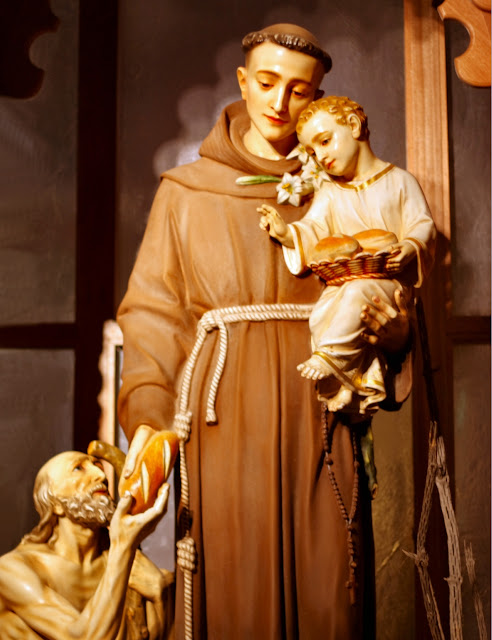Bread of St Anthony of Padua
A legend about the bread tells us that when Saint Anthony was in his Convent and at the request of alms from a large group of poor people, he distributed all the bread that was in the convent without asking the baker for permission. When it was time to distribute the bread to the friars, the baker noticed and told San Antonio. He told him to come back and check if it was true that there was no bread. The baker friar did so, and was amazed to see that the baskets were full of bread. Again the miracle was done. In the church of the Franciscan convent of Aracoeli in Rome we find a painting by Pinturicchio (1454-1513) - a pseudonym of Bernardino di Betto di Biagio - depicting Saint Anthony with a book in his right hand and a bread on top. It is very possible that the inspiration came from this Antonian legend.
Finally, in 1888, in Toulon, a city in France located in the department of Var, lived a young woman named Luisa Bouffier, a pious and devoted woman from San Antonio de Padua. Luisa, ran a small business. One day he could not open the door because he had lost his key. He called the locksmith, and for many efforts he could not get what he wanted. Then Luisa went to San Antonio, offering alms to the poor if she managed to open the door; and as soon as he had finished making such a promise, the door opened effortlessly. In the back room he placed an image of Saint Anthony de Padua and there he began to worship him: Likewise, he placed a brush for the devotees of Saint Anthony to give their alms, and with it attend to the poor of the town.
The miracle ran from mouth to mouth and the people of the place and the neighboring towns began to go to that back room to pray before the image and make their requests. That religious practice was extended to other cities and other countries, and today many churches around the world have brushes with the image of Saint Anthony and the legend Bread for the poor.
This image is a public domain image, which means either that copyright has expired in the image or the copyright holder has waived their copyright. Franciscan Gallery charges for the access to high resolution copy of the image. Manually restoration was necessary in order to improve quality, without covering the original image.






We don't worship saints, only God
ReplyDeleteSt Antonio de Padua pray for us
ReplyDeleteto